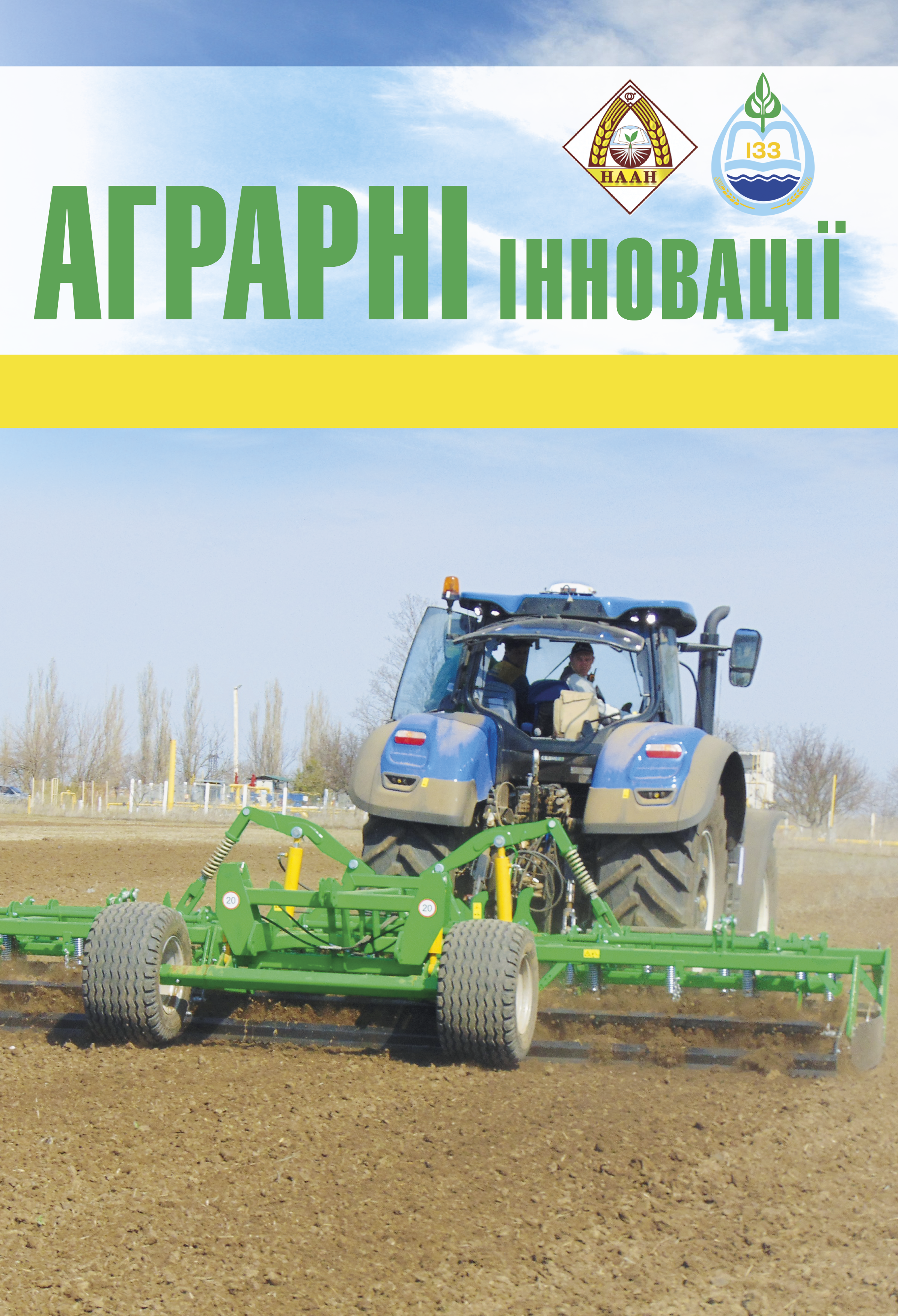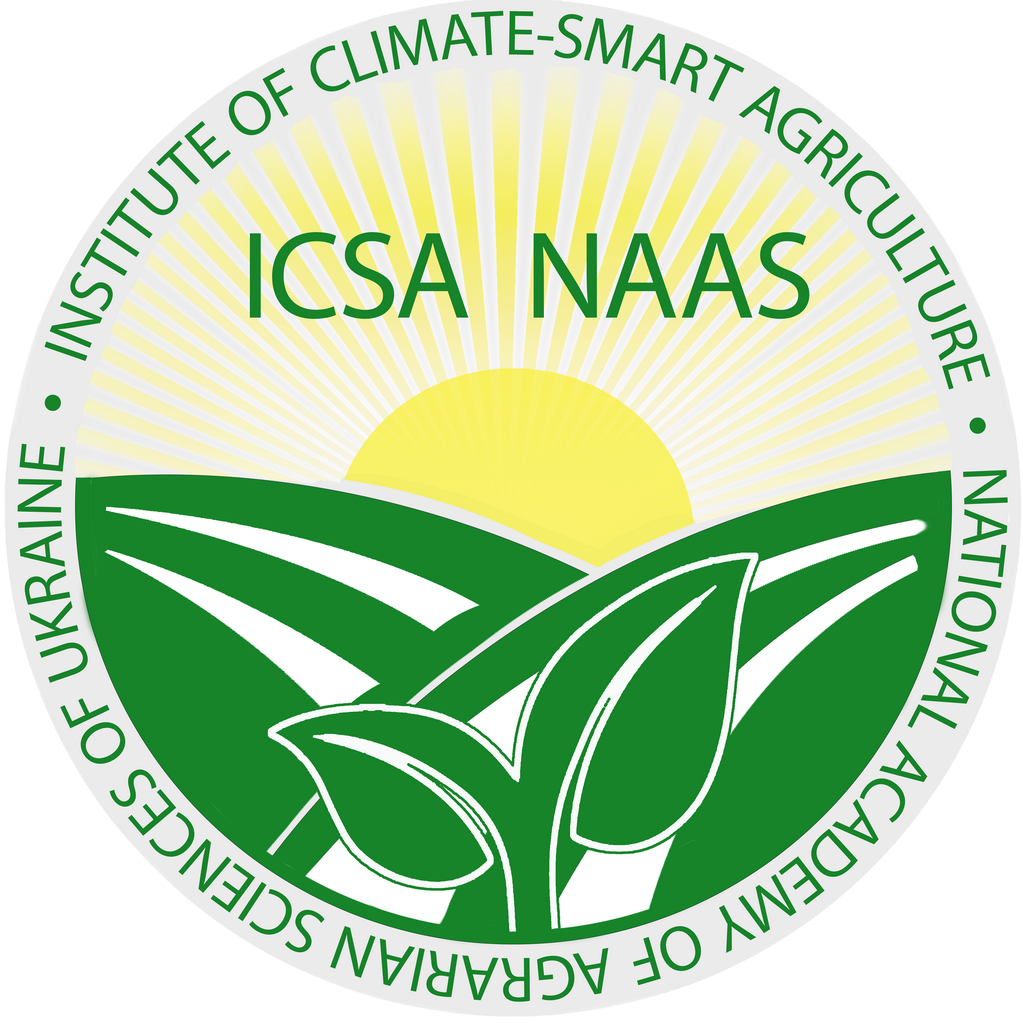Peculiarities of growth, development and yield formation of garden strawberry plants depending on soil mulching
Abstract
Objective. The goal is to investigate the best variety of garden strawberry and the most effective type of mulching material. Materials and research methods. Field studies to study the features of growth, development and yield formation of garden strawberry plants depending on the mulching of the grant were carried out in the conditions of the Right-Bank Forest-Steppe in 2021-2023. The experiment is two-factorial. The varieties studied were: Rumba, Honey, Clery. The experiment options were mulching materials: black film, black agrofiber, straw. The control option was without mulching. The research was carried out in accordance with methodological recommendations. The research data obtained in the experiment were statistically processed using the analysis of variance method. Research results. The article reveals the peculiarities of growth, development and yield formation of garden strawberry varieties depending on soil mulching. It was found that the use of black film and black agrofibre as mulching materials leads to an acceleration of the activation of growth processes. In the variant using straw as a mulching material, a slowdown in growth processes is observed compared to the control. The largest fruit mass was recorded in the Rumba variety when grown on black film – 40.1 g. Depending on the mulching of the plantations, the experiment revealed that the average fruit mass was the largest when the soil was mulched with black film: the Rumba variety had an average fruit mass of 30.0 g., the Honey variety – 24.6 g, and the Clery variety – 26.0 g, which is 7.7; 8.1 and 8.4 g more than the variant without mulching, respectively. The most effective mulching materials were black film and agrofibre, where the increase in leaf area relative to the control was in the Rumba variety: 9.8 – 8.6 thousand m2/ha. The largest number of horns and flower stalks on the plant was recorded in the Clary variety when the soil was mulched with black film – 14.3 pcs/bush and 7.6 pcs/bush, respectively. The yield of the Rumba variety using black film was 31.3 t/ha, where the increase in yield was monitored within 6.8 t/ha relative to the control variant. The marketability indicator of the Rumba variety in the variant using black film was the highest and amounted to 94%. Conclusions. According to the conducted studies, it was found that the growth, development and yield formation of garden strawberry varieties depend on soil mulching. The use of black film and black agrofibre as mulching materials led to the acceleration of the activation of growth processes, the formation of the largest fruit mass – 26.0-30.0 g. Also, mulching the soil with film and agrofibre contributed to an increase in the area of leaves and the number of horns, which also depended on the studied variety. The yield of the Rumba variety using black film was the highest – 31.3 t/ha with the highest marketability indicator at 94%.
References
2. Болобон Н.М. Вплив ґрунтово-кліматичних умов на урожайність суниці садової (Fragaria ananassa L.). Садівництво. 2023. Вип. 78. С. 26-31. DOI: 10.35205/0558-1125-2023-78-26-31
3. Державний реєстр сортів рослин, придатних для поширення в Україні на 2023 рік, Київ. 2023. 519 с.
4. ДСТУ 7653:2014 Суниця свіжа. Технічні умови. Інститут садівництва Національної академії аграрних наук України. 01.07.2015.
5. Зінченко, Т. І. Гігієнічна оцінка безпечності суниці при застосуванні інсектицидів та фунгіцидів в системі хімічного захисту. Медична наука України, 2016. № 3-4. С. 103-108.
6. Карпенко В. П., Бурляй А. П., Буцик Р. М., Майборода В. М. Продуктивність суниці садової за різних технологій вирощування. Збірник наукових праць УНУС. 2019. Випуск 95, част.1, С. 117-127
7. Павлюк В. В., Чмух А. І., Чмих С. В., Павлюк Н. В., Ковальчук Н. С. Агробіологічні особливості вирощування сортів нейтрального дня садової суниці (Fragaria ananassa Duch.). Садівництво. 2015. № 69. С. 54-65.
8. Паламарчук І.І. Стан і перспективи вирощування плодово-ягідних рослин та винограду в умовах інтенсифікації садівництва. Сільське господарство та лісівництво. 2024. № 32. С. 109-120. 35741. DOI:10.37128/2707-5826-2024-1-9
9. Рожков А. О., Пузік В. К., Каленська С. М. та ін. Дослідна справа в агрономії: навч. посібник: у 2 кн. Кн. 1. Теоретичні аспекти дослідної справи. Х.: Майдан. 2016. 316 с.
10. Скорейко, А. М., Андрійчук, Т. О., Хомяк, В. В. Вплив мульчування міжрядь суниці на розвиток фітофторозу. Захист і карантин рослин. 2014. № 60. С. 344-348.
11. Туренко В., Синявін А. Особливості патогенезу білої плямистості суниці садової в умовах східної частини Лісостепу України. Вісник ЛНАУ. № 26. С. 137-141
12. Фільов В. В. Результати порівняльної оцінки господарсько-біологічних особливостей нових сортів суниці української селекції з провідними європейськими сортами в умовах Сумщини. Вісник Сумського національного аграрного університету. 2013. № 11, С. 110-115.
13. Gaworski M. & Nowakowski T. 2009. Irrigation of field crops. Agrotechanika. 2, pp. 44–47.
14. Klamkowski K., Treder W., Sowik I., Tryngiel-Gać A. & Masny A. 2013. Comparison of response of three strawberry cultivars grown under greenhouse conditions to water deficiency. Infrastructure And Ecology of Rural Areas. 2(I), pp. 137–146
15. Laugale V., Dane S., Strautiņa S. and Kalniņa I. Influence of vermicompost on strawberry plant growth and dehydrogenase activity in soil. Agronomy Research. 2020. 18(S4), 2742–2751
16. Nowakowski T. 2009. Systemy deszczowania i nawadniania. Wiadomości Rolnicze. 03(55), Р. 36 17. Nowakowski T., Chlebowski J. and Grzybowska A. Effects of drip irrigation on the yield of strawberry plants grown under arable conditions. Agronomy Research. 17(3), 761–770, 2019 https://doi.org/10.15159/AR.19.049
18. Univer T., Põrk K. and Univer N. Living grass mulches in strawberry cultivation. Agronomy Research. 2009. № 7(Special issue I), Р. 532–535
19. Sinha, R.K., Herat, S., Chauhan, K., Valani, D. 2009. Earthworms vermicompost: a powerful crop nutrient over the conventional compost & protective soil conditioner against the destructive chemical fertilizers for food safety and security. Am-Eurasian J. Agric. Environ. Sci. 5(S), 14–22.
20. Żurawicz E. & Masny A. 2010. Porady dla producentów truskawek. Hortpress, Kraków






